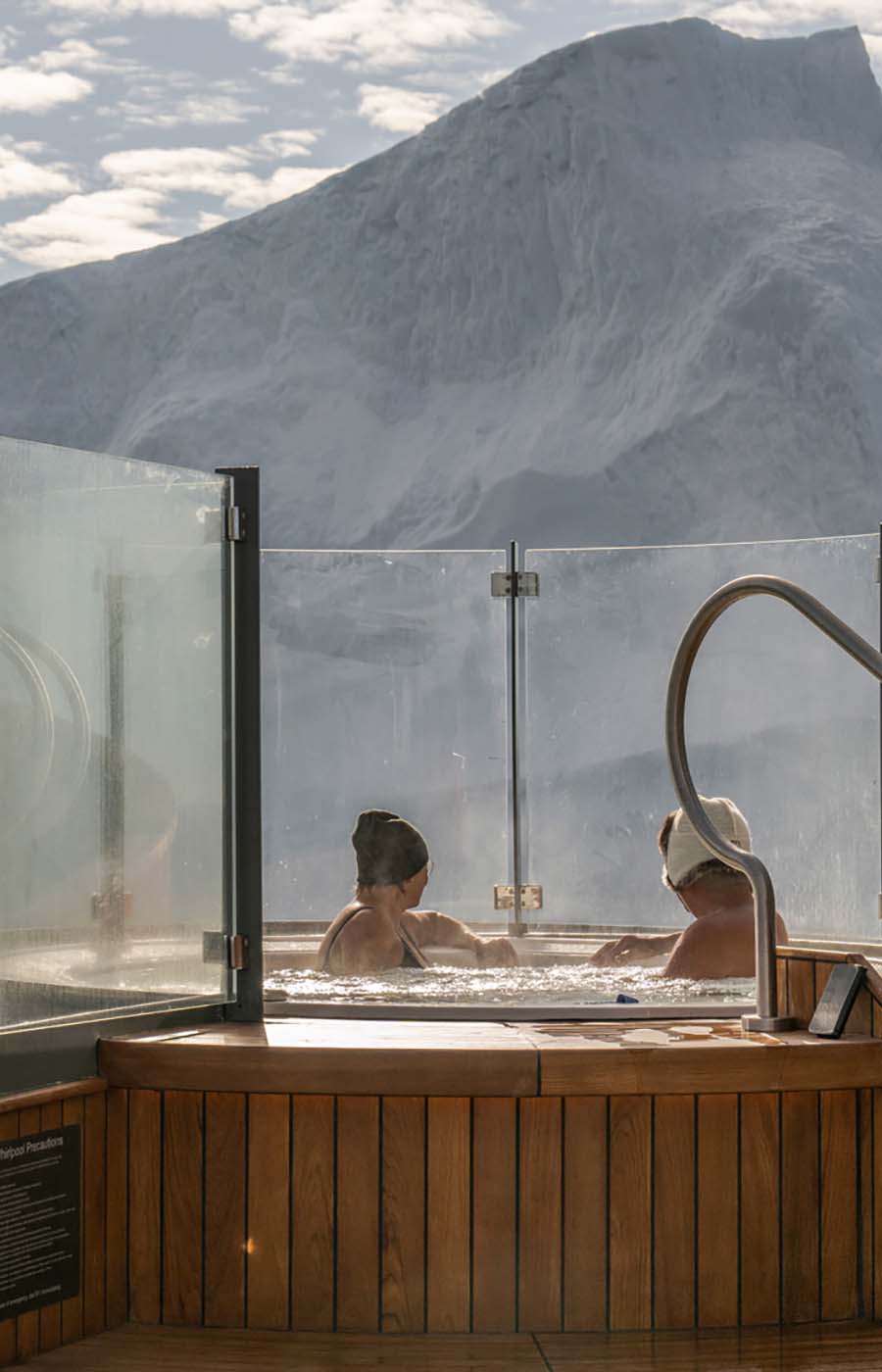Why this “land reborn” should top your travel wish list.
To visit Glacier Bay National Park and Preserve is to witness a living laboratory, a richly diverse ecosystem that was blanketed beneath a single sheet of ice just a few hundred years ago. The Huna Tlingit call this area Sít’ Eeti Geiyi (“Bay in Place of the Glacier”) and their language includes names for each new cottonwood forest and strawberry patch exposed by the glacial retreat.
The 3.3 million-acre park, located in Southeast Alaska, encompasses more than 1,000 glaciers, remnants of the Little Ice Age that began some 4,000 years ago. Most are located high in the mountains, but a handful—known as tidewater glaciers—extend all the way to the sea. Visitors cannot drive into the park from elsewhere in Alaska, so most gain access via a limited number of vessels allowed in each day during summer months. Seabourn and other cruise ships generally spend a full day navigating Glacier Bay, with National Park Service Rangers on board to provide insights about and greater appreciation for its wonders.
Behold Its Biodiversity
What is known today as Glacier Bay was formed by major glacial advancements recurring over millennia, up through the last ice age. The glacier reached its maximum extent around 1750; yet the dynamics of tidewater glaciers and how they interact with sea water caused a rapid retreat. Indeed, the bay’s glacial covering had already melted back five miles when British Captain George Vancouver first surveyed Alaska’s southeast coast aboard HMS Discovery in 1794; by the time conservationist John Muir arrived in 1879, it had retreated an additional 40 miles.
Known as a “land reborn,” the now 65-mile-long bay boasts myriad landscapes—from steep, jagged peaks and sheltered fjords to temperate rainforest and wild shorelines. It was first designated a National Monument in 1925, then granted National Park status in 1980; the park (along with Admiralty Island) also was designated as a World Biosphere Reserve. In 1979, Glacier Bay—together with Wrangell-St. Elias National Park, as well as Canada’s Kluane National Park and Alsek-Tatshenshini-Alsek Provincial Park—was inscribed as a UNESCO World Heritage Site that, at 24.3 million acres, is one of the largest protected wilderness areas on earth.
Witness Its Wildlife
After the last glacial advance carved out Glacier Bay, life in all forms—plant, animal, terrestrial and marine—has continually found its way here, making it a favorite spot for biologists, marine scientists, and others to study and learn. Humpback whales spend the summer in these nutrient-rich waters before wintering in Hawaii and Mexico, while Arctic terns raise their young here before their long migration to Antarctica.
Bring a good pair of binoculars to scan the shore for black and brown bears, moose and mountain goats. Birders have recorded more than 280 species in the park—including bald eagles, ravens, and colonies of gulls, puffins, guillemots and cormorants—while sea otters and harbor seals can be spotted offshore.
Treasure Its History
Glacier Bay National Park is the ancestral homeland of the Huna Tlingit, one of Alaska’s First Peoples. (The Yakutat Tlingit tribe also claims the preserve portion.) The Huna Tlingit began settling here centuries ago; despite many historic challenges, they have returned to the area time and again, living in balance with its abundant resources.
[Glacier Bay] is the ancestral homeland,” says a Huna Elder. “It's where we came from. It's where every story of our beginning starts.
The Huna Tribal House, located in Bartlett Cove, was built in 2016 to commemorate the clan houses that once lined Glacier Bay’s shores. Carefully crafted to reflect traditional architecture while enhanced with modern amenities, it is a place for tribal members to gather and celebrate, as well for travelers to learn about Huna Tlingit history and culture.
When to Visit
Alaska’s cruise season runs from May through September, with most travelers visiting Glacier Bay between mid-June and August. Summertime in this southern coastal region is generally milder than many expect; daytime temps average between 50 and 60 degrees Fahrenheit. Rain and snow, however, are factors nearly year-round, so pack sturdy shoes and plenty of warm, waterproof layers to stay comfortable and cozy.
Ready to tick Glacier Bay off your travel wish list? Seabourn's ultra-luxury voyages are the best way to explore this North American treasure. Every Alaska sailing features optional, expert guide-led Ventures by Seabourn excursions via kayak, Zodiac and hiking; or delve even deeper on an Alaska Seabourn Journeys pre- or post-cruise extension to inland destinations including Denali National Park and the majestic Canadian Rockies via luxury glass-domed railcar aboard the legendary Rocky Mountaineer.
Consider these upcoming voyages:
32-Day In-depth Japan Exploration & Pacific Passage
DEPARTS: Tokyo, Japan
ARRIVES: Vancouver, B.C., CA
Apr 13, 2026
from $14,534*
Explore Itinerary*Per Person, USD. Taxes and Fees are included. Additional terms apply.
18-Day Japan, Alaska & Pacific Crossing
DEPARTS: Tokyo, Japan
ARRIVES: Vancouver, B.C., CA
Apr 27, 2026
from $5,949*
Explore Itinerary*Per Person, USD. Taxes and Fees are included. Additional terms apply.
26-Day Pacific Passage: Golden Week To Glacier Bay
DEPARTS: Tokyo, Japan
ARRIVES: Juneau, Alaska, US
Apr 27, 2026
from $9,944*
Explore Itinerary*Per Person, USD. Taxes and Fees are included. Additional terms apply.
Besides proximity to the natural wonders Alaska’s known for, this city also affords visitors the opportunity to immerse themselves in local culture and history.
Explore the Southern hemisphere with a world-class expedition team.
No visit to this magical country is complete without a good view of at least a few of these natural wonders

